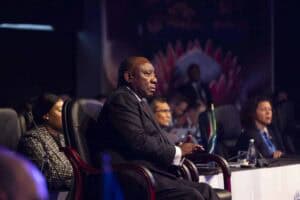Jarana had a better chance than most of getting SAA right. Despite lacking experience in the highly competitive aviation industry, his experience and success in the equally competitive telecommunications sector as senior executive at Vodacom would have been enough to get SAA on the right heading. Vodacom is a huge business, much bigger than SAA. In the year to March 2019, Vodacom reported turnover of R74 billion from 110 million customers, which translated into an operating profit of more than R24 billion.
Vodacom spent R13 billion in capital expenditure and still reported free cash flow of nearly R15 billion. This performance allowed a black economic empowerment transaction to the tune of R16 billion. Comparison to SAA might be unfair. Nevertheless, SAA booked fewer than 10 million passengers in the year to March 2017 and reported turnover of R31 billion, less than half of that of Vodacom.
However, it seems Jarana could not transfer any of the success of the private business sector to state-owned SAA – and neither would anybody else, unless they had the freedom and authority to make tough business decisions.
Two reasons
Reports on Jarana’s resignation list two major reasons for his decision to quit: the difficulty in taking business decisions, and the precarious state of SAA’s finances.
A lot of difficult and politically unacceptable business decisions are necessary to save SAA. The airline needs to re-evaluate every route, aeroplane and service contract, and every little operational action. It needs to re-evaluate every single job.
The only way to get SAA financially sustainable is to cut costs. The only way to cut costs is to work more efficiently and more effectively, which implies that SAA needs to retrench a large percentage of its staff. It would be a business decision in a private company; it is a nightmare in a state-owned enterprise.
SAA employs more than 10 000 people. While only an aviation and business expert with free access to SAA would be able to determine the right staff levels and optimum level of service, most experts are of the opinion that a staff complement of 10 000 is way too high for the number of flights SAA operates.
Hands tied
Any CEO with a business background and the goal of making SAA successful would have been able to force through the necessary changes to the operational structure of SAA. Jarana was unable to, and if the next CEO’s hands are similarly tied, they won’t be able to either.
The second reason given for Jarana’s resignation is even more important: that he has concerns about SAA’s financial sustainability.
In this he is probably correct. The airline has not published financial statements for years.
The most recent available financial statements for SAA are for the year to March 2017. Jarana’s previous employer Vodacom has published its results five times since then.
And the latest SAA annual report – so old – does not make for relaxing reading. After struggling through 104 pages of whatever, the income statement reveals a loss of R5.4 billion. And the balance sheet shows that SAA is bankrupt, with negative equity of nearly R18 billion.
While most companies are busy working on their results for the year to March 2019, SAA is still to produce statements for 2018.
Which brings us back to the question of financial sustainability. Given that there should be no argument that banks’ first responsibility is towards their depositors, should any funding requests from SAA be entertained?
Parlous state
SAA’s expenses exceed its income by far. Its liabilities exceed its assets. Its audited financial statements are two years out of date. Daddy stands to guarantee the loans, but Daddy’s own finances are suspect. Thus, it is not unreasonable to ask if SAA can survive.
Nobody can blame Jarana for leaving. Deon Fredericks, who recently joined SAA as chief financial officer after success at Telkom, will probably be the next to resign.
On a personal note, I love aeroplanes and SAA. In 1991, the airline invited me to Toulouse in the south of France to fetch their very first Airbus A320. I also attended the christening ceremony in a hanger a few weeks later. The plane was named Blue Crane. I still see it from time to time when I fly. My daughter is currently sitting her airline pilot examinations.
Brought to you by Moneyweb







